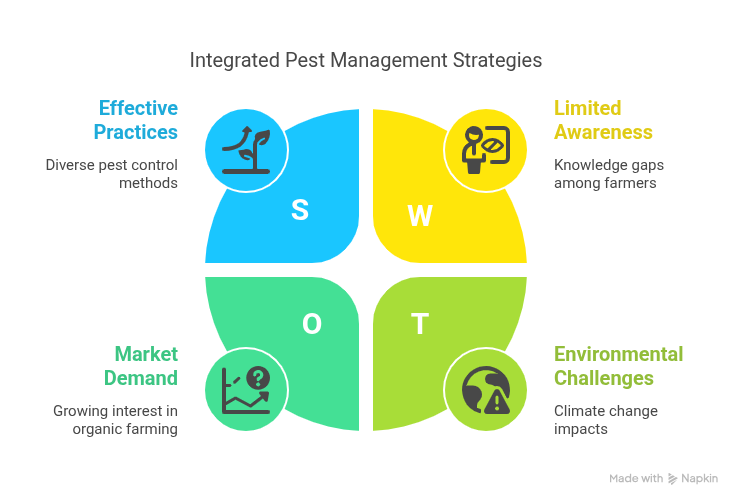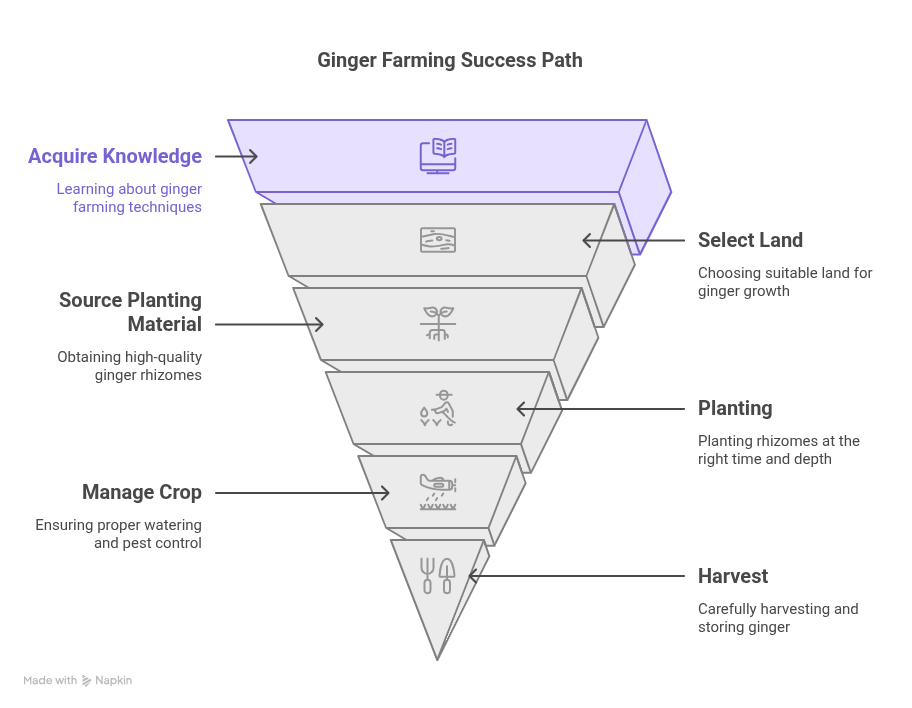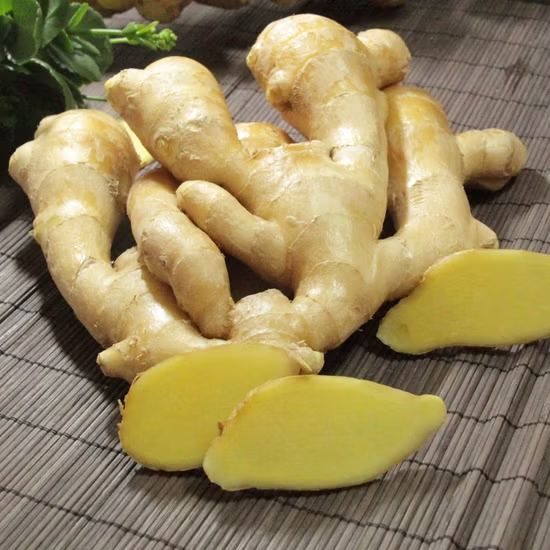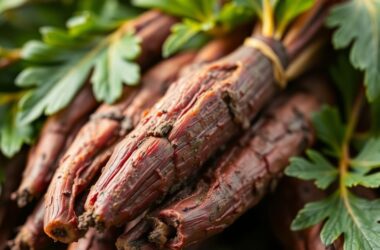Thinking about diving into Kenya’s agricultural gold rush? Ginger farming might just be your ticket. This spicy rhizome isn’t just transforming Kenyan agriculture—it’s creating serious cash flow for savvy farmers who know how to play the game.
Why Ginger Farming in Kenya is Heating Up
The numbers don’t lie. Kenya’s ginger scene is on fire, with production hitting approximately 14,000 metric tons in 2023—a massive jump from previous years. Though 2022 saw a slight yield dip to 11 tons per hectare (a 7.8% decrease), the overall trajectory is unmistakably upward. The real eye-opener? That insane 537% yield increase recorded in 2021, as reported by Farmers Trend.
Kenya’s global position has shot up too. In 2019, the country ranked 27th worldwide with 359 metric tons output—leapfrogging from 38th place in 2018 with a mind-blowing year-over-year growth of 2,293.3%, according to Nation Master’s ginger production rankings. The five-year Compound Annual Growth Rate (CAGR) stands at a solid 4.7%, showing consistent long-term growth despite yearly fluctuations.
For perspective, India dominates the global scene with 1,788,000 metric tons (2019), followed by Nigeria, China, Nepal, and Indonesia as tracked by Nation Master. But Kenya’s rapid ascent tells you everything you need to know about the untapped potential here.
Where Ginger Thrives in Kenya
Not all Kenyan soil will give you those premium rhizomes. The crop demands specific conditions—tropical climate, well-drained fertile soils, and the right amount of rainfall. The prime ginger territories in Kenya include:
- Meru
- Nyeri
- Embu
- Kirinyaga
These regions deliver the warm, humid conditions and consistent rainfall that make ginger thrive. If you’re checking soil specifics, aim for slightly acidic (pH around 6.5) with rich organic matter and excellent drainage to prevent rhizome rot—ginger’s worst enemy.
Getting Your Hands Dirty: Cultivation Techniques
Selecting Your “Seeds”
Let’s get one thing straight—ginger doesn’t grow from seeds but from rhizome pieces. Kenyan farmers select healthy, disease-free rhizomes with visible growth buds or “eyes.” These chunky pieces, commonly called “ginger seeds,” get planted in prepared beds about 25 centimeters deep, with growth buds facing skyward, as recommended by agricultural experts.
Perfect Timing and Spacing
Timing is everything. The ideal planting window aligns with Kenya’s long rainy season (March to May), letting the crop establish with natural moisture before drier periods hit. Don’t crowd your plants—keep them spaced about one foot apart to facilitate healthy growth, weeding, and eventual harvesting, according to successful farming practices.
Water and Nutrients: Finding the Sweet Spot
Ginger’s thirsty, especially during its early growth stages. While it loves Kenya’s rainfall patterns, irrigation becomes crucial during dry spells. The golden rule? Consistent moisture without waterlogging—overwatering is a fast track to rhizome rot and other moisture-related diseases, as highlighted in Kenya’s ginger farming guidelines.
Mulching isn’t optional—it’s essential. It locks in soil moisture, keeps weeds at bay, and regulates soil temperature. Most Kenyan ginger farmers use organic materials like dry grass, leaves, or agricultural waste, a practice that has shown significant benefits for yield improvement.
For feeding your crop, start with organic matter like compost or manure before planting to boost soil fertility. Many farmers supplement with balanced chemical fertilizers throughout the growing season, but the foundation should always be organic.
Battling Pests and Diseases
Kenya’s ginger crops face several formidable enemies—root knot nematodes and bacterial wilt top the list. These pathogens can devastate yields and stubbornly persist in soil for extended periods, as documented in agricultural research.
Smart farmers deploy integrated pest management approaches:
- Crop rotation
- Using only disease-free planting material
- Implementing appropriate cultural practices
- Organic pest control methods to reduce chemical dependence

From Earth to Market: Harvesting and Processing
After patiently nurturing your crop for 7-10 months, you’ll spot the harvest signal—yellowing and die-back of leaves. Harvesting technique matters: carefully dig up those rhizomes using forks or spades to minimize damage, as advised by agricultural specialists.
Post-harvest handling can make or break your profits. Proper drying and storage in cool, well-ventilated spaces prevents moisture buildup and spoilage. Processing might include cleaning, sorting, and grading rhizomes by size and quality.
The real profit booster? Value addition. Processing into dried ginger, powder, or essential oils can significantly increase returns—though this opportunity remains largely untapped by Kenyan producers, according to market analyses.
Market Dynamics: Where to Sell Your Spicy Gold
The Growing Domestic Scene
Kenya’s domestic ginger market is expanding steadily. Locally, it’s a staple ingredient in various dishes and beverages, including teas and juices. The rising popularity of natural remedies and health-conscious consumer trends has further boosted demand for ginger-based products, as tracked by consumer trend researchers.
Urban markets—particularly Nairobi, Mombasa, and other major cities—offer premium prices for quality ginger. The hospitality industry, including hotels and restaurants, represents another significant market segment for fresh ginger.
Going Global: Export Opportunities
Kenya has been developing its ginger export market, with shipments reaching Europe, Asia, and the Middle East. International buyers value Kenyan ginger for its quality and distinctive flavor profile, as noted in export market analyses.
The challenge? Meeting international quality standards and phytosanitary requirements—a hurdle for many small-scale producers eyeing these lucrative markets. With global demand for ginger increasing, particularly in health-conscious markets, export potential represents a significant growth opportunity for Kenya’s ginger sector.
Real Talk: Challenges You’ll Face
Let’s not sugarcoat it—ginger farming in Kenya comes with hurdles:
- Pest and Disease Pressure: Root knot nematodes and bacterial wilt can wreck your yields if not managed effectively. Limited access to resistant varieties and pest management knowledge makes this even tougher, as documented by agricultural researchers.
- Market Volatility: Fluctuating prices create uncertainty and can squeeze your profits. Without organized marketing structures and price information systems, many farmers fall victim to exploitative middlemen, a challenge highlighted in market studies.
- Limited Access to Finance: Many smallholders struggle to access credit for investing in inputs, equipment, and infrastructure. This financial constraint puts the brakes on scaling operations and adopting improved technologies, according to economic analyses.
- Knowledge Gaps: Technical know-how about optimal cultivation practices, pest management, and post-harvest handling can make or break your operation, as noted by agricultural extension services.
- Infrastructure Limitations: Inadequate storage facilities, poor rural roads, and limited irrigation infrastructure create logistical nightmares, particularly in remote areas.
Turning Challenges into Opportunities
Despite the obstacles, several opportunities exist for savvy ginger farmers:
- Farmer Organization: Joining or forming ginger farmers’ associations facilitates knowledge sharing, collective bargaining for better prices, and improved market access. These networks significantly strengthen farmers’ position in the value chain, as shown by successful farmer groups.
- Value Addition: Processing ginger into value-added products (dried ginger, powders, oils, or ready-to-use pastes) can dramatically increase profit margins and extend shelf life—a largely untapped opportunity for many Kenyan producers.
- Research and Development: Investment in research for disease-resistant ginger varieties and effective, sustainable pest management strategies would address key production constraints, as advocated by agricultural scientists.
- Digital Marketing and E-commerce: Leveraging digital platforms for marketing and direct sales helps farmers bypass intermediaries and capture more value from their production.
- Organic Certification: With growing global demand for organic products, obtaining certification could open premium market segments for Kenyan ginger farmers practicing sustainable farming.
Your Step-by-Step Guide to Successful Ginger Farming
Step 1: Master the Knowledge Game
Before breaking ground, invest time learning about cultivation techniques, pest management, and market dynamics. Resources are available through agricultural extension offices, online platforms, and farmer training programs offered by government agencies or NGOs, as recommended by farming experts.
Step 2: Choose the Right Land
Select appropriate land with well-drained, fertile soil with slightly acidic pH (around 6.5). Access to water for irrigation during dry periods is crucial. If leasing land, ensure proper drainage and a history free of ginger cultivation to minimize disease risks, according to land selection guidelines.
Step 3: Source Quality Planting Material
This is non-negotiable. Source high-quality, disease-free planting material—plump ginger rhizomes with prominent “eyes” or buds from reputable suppliers or agricultural research institutions, as emphasized by successful growers.
Step 4: Plant Like a Pro
Time planting to coincide with the long rains (March-May) to optimize natural moisture. Prepare seedbeds by loosening soil and adding organic matter to enhance fertility and drainage. Plant rhizomes with eyes facing upward at the correct depth (25 cm) and spacing (approximately one foot between plants), following proven planting techniques.
Step 5: Manage Your Crop Meticulously
Throughout the growing season, maintain consistent but not excessive watering, particularly during initial growth stages. Apply mulch to retain moisture, suppress weeds, and regulate soil temperature. Regularly monitor for pests and diseases for timely intervention, preferably using organic control methods when possible, as advised by crop management specialists.
Step 6: Harvest and Handle with Care
Time your harvest correctly (7-10 months after planting) when leaves begin to yellow and die back. Carefully excavate using appropriate tools to minimize rhizome damage. Proper cleaning, drying, and storage in cool, well-ventilated spaces prevents spoilage and maintains quality, according to harvest best practices.

The Future of Ginger Farming in Kenya
Kenya’s ginger sector shows remarkable potential for agricultural diversification and income generation, particularly for smallholder farmers in suitable agro-ecological zones. Despite current challenges, the sector has demonstrated impressive growth, with production increasing substantially and Kenya improving its global ranking among ginger-producing nations.
The outlook appears positive, supported by growing domestic and international demand. Realizing this potential will require coordinated efforts from various stakeholders, including government agencies, research institutions, extension services, and farmer organizations. Investments in research and development, market linkages, and farmer capacity building are essential for addressing current constraints and capitalizing on emerging opportunities.
Bottom Line: Is Ginger Farming Worth It?
For individual farmers, success in ginger cultivation demands careful attention to agronomic practices, from land selection and seed quality to crop management and harvest timing. By adopting recommended practices and engaging with support networks, Kenyan ginger farmers can enhance productivity, improve quality, and ultimately increase returns from this promising crop.
As the sector continues to develop, Kenya has the potential to significantly strengthen its position in the global ginger market, contributing to agricultural transformation and rural economic development. The spice that once belonged to the East is now finding a powerful new home in Kenyan soil—and smart farmers are cashing in on the trend.
Ready to get your hands dirty with Kenya’s most promising cash crop? The opportunity is ripe, the demand is growing, and with the right approach, your ginger farming venture could be the next agricultural success story.










